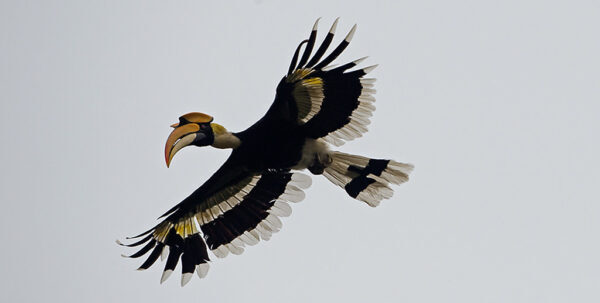Hornbills (Bucerotidae) are a family of bird found in tropical and subtropical Africa, Asia and Melanesia. They are characterized by a long, down-curved bill which is often brightly colored and sometimes adorned with a large casque, a hollow structure made from keratin. The family includes around 60 species divided into two subfamilies: Bucerotinae, which comprises the ground hornbills, and Bucorvinae, which includes the larger species known as the ‘great’ or ‘large’ hornbills.
Physical Traits
Hornbills have a long tail, broad wings, and white and black, brown or gray feathers. This contrasts with the brightly colored neck, face, bill and casque of some species. The great hornbill is one of the largest species with males reaching up to 1 meter in length while females are slightly smaller at around 80 cm.
Lifespan
The lifespan of hornbills varies depending on the species but can range from 10-50 years in captivity.
Habitat
Hornbills inhabit tropical forests across Africa, Asia, and Melanesia where they feed mainly on fruit but also take small animals such as lizards or insects. They live in pairs or small groups in tree hollows or rocky crevices where they build nests lined with mud and vegetation.
Diet
Hornbills feed mainly on fruits but will also take small animals such as lizards or insects when available. They have been known to raid other birds‘ nests for eggs too!
Reproduction
Hornbill mating rituals vary between species but generally involve courtship displays such as calling out to each other or bowing their heads toward one another. Once paired off they will build a nest together using mud and vegetation before laying their eggs inside it. The female then seals herself inside the nest using her own droppings until the chicks hatch after which she breaks out to help care for them until they fledge at around 3 months old.
Conservation Status
Most hornbill species are listed as Least Concern by the IUCN due to their wide distribution across multiple countries however some more localized populations may be threatened due to habitat loss or hunting pressure.
Interesting Facts
The Rhinoceros Hornbill has an impressive golden-yellow casque on its beak that can reach up to 15 cm in length! It is thought that this structure helps amplify their calls during the mating season making them easier for potential mates to hear from far away distances!


